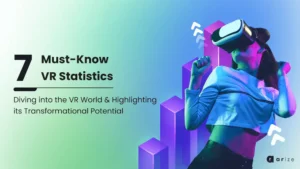While many views augmented reality as a novel sci-fi notion confined to high-tech concepts and ideas, it has slowly and steadily become part of daily life over the last few years, without people realizing that it is what they are suing. Here we will look at some of the most common uses of AR throughout different consumer industries and how companies have utilized the technology to enhance the brand offerings to their customer base and improve their experience.
Snapchat
Snapchat is a hugely popular messaging app and was the first to make filters popular in social media.
Apps like Snapchat put these filters on your face using facial recognition technology. Then the filters are imposed onto the face using augmented reality to enhance the image users see and transform it in various ways.
This tech was first introduced as “lenses” in 2015 and is one of the most popular examples of AR in the mainstream.
Pokémon GO
While Snapchat is an early example of AR, this is one of the most popular. Launched in 2016, it took only a few months before the world was gripped by Pokémon fever.
The idea was to create a game that used digital technology while encouraging physical movement and exercise.
Using AR technology to incorporate the environment surrounding the player created an incredibly authentic experience and took the gaming world by storm!
Google Street View
AR is responsible for the biggest innovation in maps since the invention of digital maps. While digital maps are handy and can be accessed easily on mobile phones, Google Street View has upgraded the experience even further.
Using Street View, users can see the markings and directions live in front of them overlaid on the streets they are trying to navigate.
It uses AR to overlay information over real-life objects, making them easier to understand and more comfortable for users.
IKEA Place
IKEA Place is one of the most popular apps that has upgraded the home furnishing and shopping experience.
Also, IKEA Place lets you virtually place true-to-scale 3D models of their home solutions in your environment to see exactly how they would fit into your space.
Combining the latest AR technology and IKEA’s inventory creates a more functional and immersive shopping experience. This helps users to make more accurate decisions, meaning they are more likely to buy and less likely to return their products.
Nike Fit
The world’s leading footwear brand has been using AR to sell products and improve the customer experience.
The implementation of Nike Fit was another in the list of these innovations. Using Nike Fit on their smartphones, customers can scan their feet, and it will display the ideal shoe size and try various products from the Nike range.
Nike Fit is part of the brand’s strategy for personalizing the footwear shopping experience.
Netflix
For Season Four of Stranger Things, Netflix launched an experiential AR marketing campaign called the Stranger Things Experience.
Fans had to visit an in-person location and participate in an immersive experience related to the show, playing games with AR features to connect them to their favorite show.
Netflix has also used AR experiences on Instagram and Snapchat to promote shows like Stranger Things and Bridgerton.
AR is All Around Us
While AR technology may seem like a complicated high-level concept only used by hardcore gamers or “tech heads,” it is and has been part of our daily lives for the best part of a decade now and will only continue to become more and more embedded in or existence as it evolves to make general life and activities simpler and more efficient.



